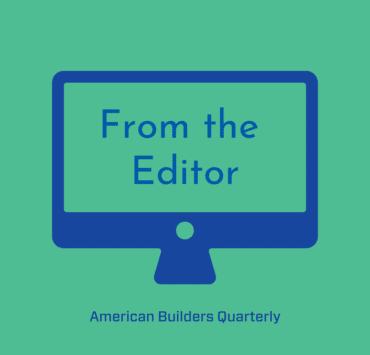|
Getting your Trinity Audio player ready...
|
Creativity has been a constant throughout Jake Bergen’s life. His father, an environmental artist, built everything from furniture to theater sets while Bergen was growing up. Inspired by his father’s practice, Bergen began testing similar waters for himself as a teenager.
“It all started with an architectural drafting class that I took my freshman year of high school,” Bergen explains. “That’s when I really got into the design side of things—planning, measuring, detailing, and thinking about what you were going to do before you decided to cut material.”
Bergen’s early interest in architecture turned out to be more than a passing one. Today, he serves as associate director of construction at California State University, Fresno (Fresno State). In the role, he facilitates complex projects across the school’s campus by approaching each job with an open mind and collaborating on creative solutions to any obstacles that may arise.
“A challenge is an opportunity for creativity.”
Jake Bergen
Bergen officially joined Fresno State in 2016, but his history with the university goes back even further. After beginning his undergraduate degree at a private college, he transferred to Fresno to pursue a program there in construction management. “That’s what first brought me to Fresno State,” he says. “I’m an alumnus of the university where I now work.”
Before returning to Fresno State as an employee, however, Bergen explored the world of commercial construction. His work took him all around the country, then back to California, where he started to find newfound fulfillment in what he was doing. “The earliest project that I felt really committed to was at East Bakersfield High School,” he says. “I was on that campus for almost three full years. That really solidified for me the long-term value of customer service, and it helped me realize what a long-term relationship between a contractor and an institution can look like.”
Bergen was a project manager at Bernards Brothers, a private contractor based in Southern California, when Fresno State reentered the picture. He had the opportunity to contribute to the school’s Physical Therapy and Intercollegiate Athletics Building, which opened its doors in 2015. “I was on campus for about 14 months prior to me coming back to work here,” he adds.
Although his role has since evolved, Bergen gained valuable experience on that initial project at Fresno State that continues to inform his perspective today. That’s particularly true when it comes to large-scale projects, like the recently completed Student Union building to which he devoted substantial attention over the past four years. “Our previously existing Student Union was built in the mid-70s when the student population was about 10,000. We now have about 25,000 students, so this project was a long time coming,” he says.
Following student-led initiatives to raise funds for the new building, the university developed a criteria document encompassing the scope and program of the project. “When the criteria document was ready to be put out to bid to our design-build teams, that’s when I got involved,” Bergen says. “We interviewed the teams two times prior to them submitting their initial proposals, and subsequently, we selected through a best-value method and the awarded team moved onto the design-build contract.”
“I was on [the East Bakersfield High School] campus for almost three full years. That really solidified for me the long-term value of customer service, and it helped me realize what a long-term relationship between a contractor and an institution can look like.”
Jake Bergen
With a team in place, Bergen faced down the year-long challenge of obtaining approval through the government agency plan review process. He encountered additional hurdles as the project moved forward, including that of a multistage build-out. “There were certain programmatic spaces within the building that we planned to build out later,” he elaborates. “One unique challenge with the Student Union building was managing that start and stop between where our initial contractor was completing the main structure and where our tenant improvement contractors would pick up and finish a space.”
Bergen also needed to collaborate with a range of parties in order to ensure the Student Union’s functionality both during and after construction. “This was a significant project on our campus that impacted almost all of our stakeholder groups. We affected parking lots, public safety routes, and adjacent buildings,” he says. “I got to interact with myriad departments with different goals, different cares, and different wants, some of which were aligned with one another and some of which were more challenging to navigate.”
Rather than balking at such complexities, Bergen saw them as chances for himself and his team to learn—and to think outside the box. “A challenge is an opportunity for creativity,” he says of his open mindset. “With the Student Union project, there was this constant three-dimensional evaluation of what the building was going to mean and what it was going to do once it was done. That really energized me to try to think as creatively as possible.”
It’s a philosophy that’s served Bergen well, and one that would make his father proud.


